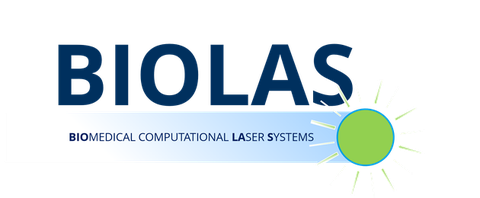In vivo brain tumor diagnostics by adaptive computational lensless fiber endoscopy
We will research the spectral characteristics of brain tumor fluorescence and miniaturize an endoscopic system while preserving high optical properties to allow optical biopsies in situ. The development of tissue classification and strategies for integration of AI-supported diagnosis into the clinical workflow will allow successful translation. This direct tumor diagnosis would allow to bypass tissue removal and lengthy pathological evaluation for immediate therapy of affected patients.
The interdisciplinary cooperation between the neurosurgery department (NCH) of the Universitätsklinik Carl Gustav Carus and the BIOLAS of the TU Dresden enables target-oriented research. The project is funded by the EKFZ for digital health.
Project-site: https://digitalhealth.tu-dresden.de/research/innovation-projects/brainace/
Staff: J. Dremel, S. Richter, O. Uckermann, W. Polanski, R. Kuschmierz
Period: 01/22-12/23
Kuschmierz, R., Scharf, E., Koukourakis, N., Czarske, J.W., 2018. Self-calibration of lensless holographic endoscope using programmable guide stars. Opt. Lett. 43, 2997–3000. https://doi.org/10.1364/OL.43.002997
Galli, R., Meinhardt, M., Koch, E., Schackert, G., Steiner, G., Kirsch, M., Uckermann, O., 2019. Rapid Label-Free Analysis of Brain Tumor Biopsies by Near Infrared Raman and Fluorescence Spectroscopy-A Study of 209 Patients. Front. Oncol. 9, 1165. https://doi.org/10.3389/fonc.2019.01165
Uckermann, O., Galli, R., Mark, G., Meinhardt, M., Koch, E., Schackert, G., Steiner, G., Kirsch, M., 2020. Label-free multiphoton imaging allows brain tumor recognition based on texture analysis-a study of 382 tumor patients. Neuro-Oncol. Adv. 2, vdaa035. https://doi.org/10.1093/noajnl/vdaa035
Kuschmierz, R., Scharf, E., Ortegón-González, D. F., Glosemeyer, T., Czarske, J., 2021. Ultra-thin 3D lensless fiber endoscopy using diffractive optical elements and deep neural networks. Light: Advanced Manufacturing., https://doi.org/10.37188/lam.2021.030



